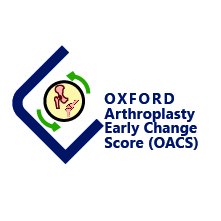Lower limb arthroplasty is a commonly performed procedure for symptomatic end-stage arthritis which has not responded to conservative medical treatment.
Each patient’s perspective of the surgical process and early recovery period impacts on their quality of life.
The OACS was devised to gain deeper understanding of the patient perspective on their treatment in the perioperative period and can be used to assess change, recovery pathways and interventions during the first six weeks following surgery.
^ Back to top



